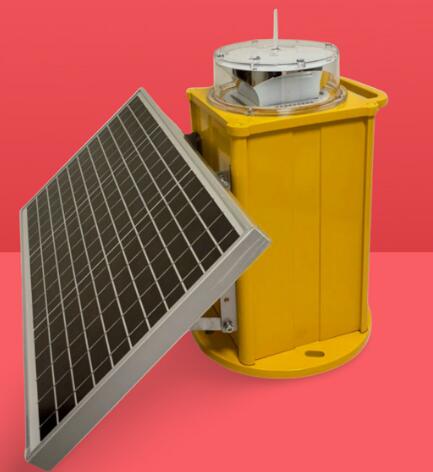Solar Powered Aircraft Warning Lights: The Green Guardians of Aviation Safety
As the aviation industry moves toward sustainable solutions, solar powered aircraft warning lights have emerged as a critical innovation in obstacle marking technology. These eco-friendly beacons combine renewable energy with advanced lighting systems to protect airspace without relying on traditional power grids. Particularly valuable for remote and environmentally sensitive locations, these lights represent the future of aviation safety infrastructure.
This article explores the unique advantages, technological features, and diverse applications of solar powered aircraft warning lights in modern airspace management.
Why Solar Power is Revolutionizing Obstacle Lighting
The aviation industry faces growing pressure to:
Reduce carbon footprints of safety infrastructure
Improve reliability in off-grid locations
Lower long-term maintenance costs
Solar powered aircraft warning lights address these needs through:
Energy Independence - Operate autonomously without grid connections
Environmental Sustainability - Zero operational emissions

Cost Efficiency - Eliminate trenching and electrical infrastructure
Reliability - Battery backup ensures continuous operation
| solar powered aircraft warning lights |
Core Technology Behind Solar Aviation Lights
Modern systems integrate multiple advanced technologies:
Solar Energy Components:
High-efficiency photovoltaic panels (22%+ conversion rates)
Lithium-ion battery banks with 5-7 year lifespans
Smart charge controllers preventing overcharge/over-discharge
Lighting Technology:
Ultra-bright LEDs with 50,000-100,000 hour lifespans
| solar powered aircraft warning light |
Adaptive flash patterns (ICAO/FAA compliant)
Photocell-controlled dusk-to-dawn operation
Durability Features:
IP66/67 waterproof ratings
-40°C to +70°C operational range
Corrosion-resistant aluminum/stainless steel construction
Unique Applications Enabled by Solar Power
Solar powered aircraft warning lights unlock new possibilities:
1. Remote Infrastructure Marking
Mountainous telecommunication towers
Offshore wind farms
Pipeline and power line crossings
2. Developing Region Installations
Rural airstrip hazard lighting
Jungle canopy construction marking
Desert oil field installations
3. Environmentally Sensitive Areas
National park observation towers
Wildlife refuge structures
Marine sanctuary installations
4. Rapid Deployment Scenarios
Disaster recovery operations
Military forward bases
Temporary construction sites
Overcoming Technical Challenges
While offering numerous benefits, solar systems face unique hurdles:
Performance Optimization:
Panel positioning for maximum sun exposure
Battery capacity vs. light output balancing
Winter/summer performance variations
Maintenance Solutions:
Self-cleaning nano-coatings for panels
Remote performance monitoring
Predictive maintenance algorithms
Regulatory Compliance:
Meeting intensity requirements year-round
Certification for extreme environments
Documentation of backup power duration
Future Innovations in Solar Warning Lights
Emerging technologies will further enhance performance:
Next-Gen Energy Storage
Solid-state batteries with higher density
Supercapacitor hybrid systems
Wireless charging capabilities
Smart Lighting Systems
Machine learning-based energy management
Aircraft-detection activated lighting
Integrated weather monitoring
Advanced Materials
Flexible solar panels conforming to structures
Transparent photovoltaic coatings
Self-healing protective surfaces
Global Adoption and Case Studies
The transition to solar powered aircraft warning lights shows promising growth:
Notable Implementations:
Scandinavian wind farms using cold-weather optimized systems
African mobile network towers achieving 99.9% uptime
Pacific island airports reducing diesel generator dependence
Performance Metrics:
30-40% lower lifetime costs vs wired systems
2-3 day autonomy during cloudy periods
5-7 year maintenance intervals
Solar powered aircraft warning lights represent more than just an eco-friendly alternative - they are redefining the economics and reliability of aviation safety infrastructure. As solar technology continues advancing and aviation expands into previously inaccessible regions, these systems will become increasingly vital.
The future of obstacle lighting clearly points toward renewable energy solutions that can deliver uncompromising safety while respecting environmental concerns. Solar powered aircraft warning lights stand at this intersection of innovation, proving that sustainable technology can indeed fly high in aviation safety applications. Their continued evolution will play a crucial role in making global airspace both safer and greener for generations to come.
